Burmese Python: The Invasive Snake is Here to Stay
Invasive species are one of the biggest threats to the environment because of their ability to rapidly grow beyond our control. Reptiles and amphibians, like any other species, can and have become invasive in many ecosystems around the world. Perhaps the most well known case of this explosive introduction is that of the Burmese python in Florida.
An invasive species is a plant, animal, fungus or bacterial species that is not native to a specific region. When introduced to a new locality, they have the tendency to spread to a degree that can cause damage to both the environment as well as human health (and sometimes economy). Some are government orchestrated releases such as the introduction of cane toads in Australia, an attempt to cut down on pest species that radically backfired. Some are spread unknowingly through trade of goods and products (I actually own two cuban treefrogs that were shipped to the US in a box of bananas, and found by a local grocery store). And others, such as the Burmese pythons, were pets; either escaped or released by careless owners, these animals are now spreading wildly through the Florida Everglades.
Florida certainly has its share of invasive species, but few are as prolific and environmentally devastating (or well known) as the Burmese python. They were originally observed in Everglades National Park in the 1980's, but these rare sightings were believed to simply be escaped captive animals. The story changed when, in 2000, the pythons were recognized as a breeding population. Pythons can be notoriously difficult to spot (especially in a massive park like the Everglades) so population estimates are difficult, but most specialists hypothesize a population as small as 30,000 and as large as 300,000 of these pythons inhabit southern Florida, and their numbers are only growing. Between 2008 and 2010, over 300 snakes were being spotted annually in the southern swamps of the state.
So how did this happen? What made the pythons such a successful species? There are several aspects of a Burmese python's nature that makes them a successful invasive species. First off, they are very large, growing up to almost 19 feet in length. Their sheer size protects them from nearly all predators, except for humans and crocodilians, so there is very little pressure on the pythons from the native species (and humans have been warned not to hunt and eat them as Everglades top predators have high levels of mercury). Even newborn pythons, though still vulnerable, are comparable in size to adult native snakes and can grow quickly enough to sizes that severely limit their vulnerability.
Burmese pythons are prolific breeders, with a high reproductive rate, low sexual maturity age and decent age longevity. A single female python breeds every other year, resulting in a clutch of up to 50 eggs, and will continue to do so throughout her life (roughly 20+ years). When you combine that fact with the possibility of a population size of 300,000 wild pythons, it's easy to see why control of the population by removing individuals is essentially impossible.
These are apex predators, the top predators of their environment, and are considered to be dietary generalists. In other words, they aren't the least bit picky about what they eat and therefore do not depend on a specific prey species. If one type of prey become unavailable, they will still find food to eat with little pause. They will eat steadily as long as food is plentiful, and when food becomes unavailable, they can survive months without eating, making them even harder to eradicate.
So how far will the pythons spread? Officials are worried about their potential spread to the southeastern portion of the United States. There is one major limiting factor that will impact their spread: climate. These pythons simply cannot tolerate cold weather, and will be hampered by the temperate winters of the US. However, in January 2010, a deep freeze in the southern US provided new insight into the possible spread of the species. Investigators found that many pythons had perished in the severe cold, however numerous snakes were able to survive (such as by burrowing underground). Scientists now worry that these behavioral traits may be heritable, and that the severe winter served as a selection event, promoting the survival of cold-tolerant pythons. If true, these snakes would have adequate defense against the elements to move further north.
We are already seeing harsh declines in mammal populations in the Everglades, observed in raccoons, opossums, bobcats, foxes, and a variety of other native species. These declines correlate to the geographical spread of the Burmese python from year to year. It is still not well documented how they indirectly impact the food web by preying on these animals.
So what do we do now that they are here?
Honestly, I highly doubt we will even come close to eliminating these animals. They are so entrenched in that ecosystem that they would be nearly impossible to remove. Several attempts to limit their population growth have been met with limited success (most recently, Florida issued a python hunt, and promised to award cash prizes to anyone who killed a python. This was a mistake as very few pythons were captured, and unknowing hunters killed many native animals, including the endangered Indigo snake). Because of their camouflage, the snakes are very hard to locate, both by humans and dogs, so they are not commonly caught unless they leave the swamps. Those that are caught have almost no impact on the wild population due to their prolific breeding. Researchers are now considering (in the earliest stages) a bio-engineered form of control, such as a virus or bacterium that will only target the pythons (additional deliberation and research is absolutely required to be sure that non-target species would remain unaffected by this control measure).
More than likely, the pythons are here to stay. They have adaptations that make them some of the most successful invasive species in the world, and are now an unfortunate part of our native ecology. So where do we go from here? Education is crucial; the public must be aware of what these released animals are capable of when they reach the ecosystem. People must be vigilant, to protect the environment from the risk of future invasive species. And we will have to do our part to make sure the native species of the Everglades continue to thrive and have a fighting chance for survival. The snakes may be here to stay, by with the help of specialists and the community, we can ensure that the Everglades does not suffer an environmental collapse.
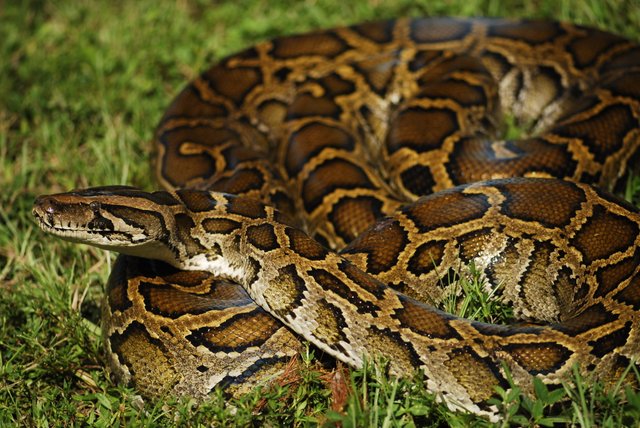
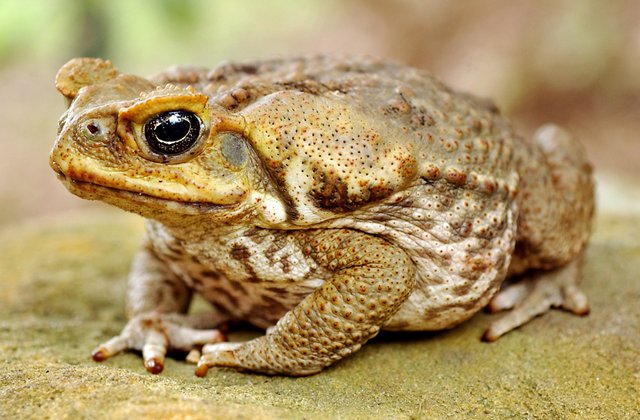
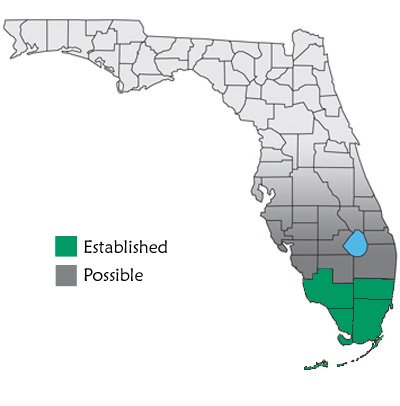

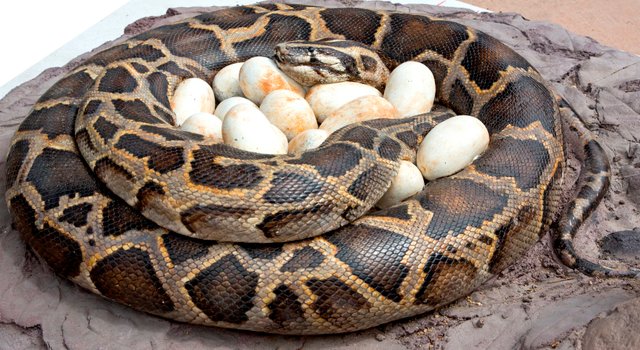


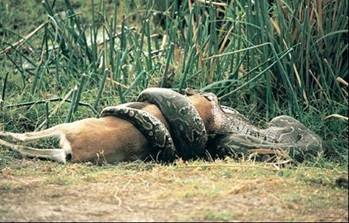
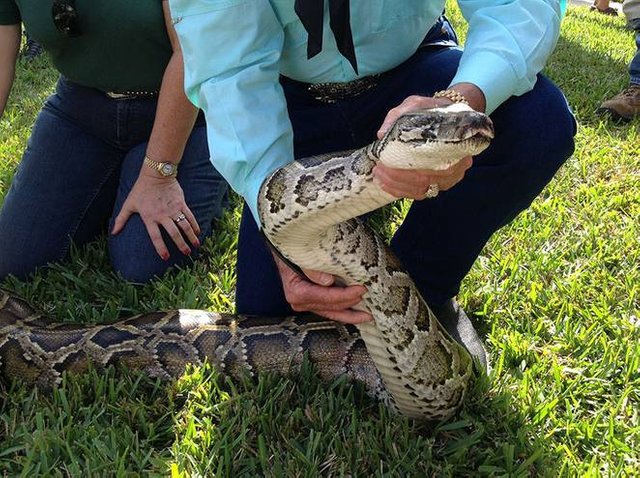

Your third last pick is of an African Rock Python... You would have worse trouble if those got established in the Glades
You caught me ;). Yeah, it's an African Rock, but I like that picture because it really demonstrates what a powerful predator the python really is (especially since the Burmese is larger than the Rock). Unfortunately, the African Rocks are relatively well established in one county in the Everglades area, and is believed to be breeding in the wild, though hopefully not as prolifically (Some people are worried about a possible African Rock/Burmese Hybrid that is larger and more aggressive, but I'm wouldn't be so concerned about that). Definitely a snake to be wary of since they are more aggressive than the Burms.
...and from my experience much stronger... they may be wiry but wow... are they strong.
They also handle the cold far better than burms... They handle areas that frost in winter by utilizing ant heaps and other underground lairs. Interestingly Afrock mothers have been shown to demonstrate parental care until the hatchlings have their first shed
I like when there are interesting things on steemit that aren't about steemit or what someone ate for lunch. +1 follower
Thanks for the follow!
I admit my first week on steemit I wasn't sure about how well this sort of stuff would go over (seemed like everyone was posting about cryptocurrencies and programming and a bunch of stuff I just plain don't understand). But I'm glad that people are finding this stuff interesting! I'll keep rolling things like this thanks to the support!
We are out here, there are dozens of us. DOZENS!
Thanks for sharing this material. I like what you posted. Thank you so much
Like
Worry Worry Worry.
Either OMG! a species is in danger of going extinct. Like the snail darter or OMG a species is NOT in danger of going extinct, like the Burmese Python which seems to be doing very well.
WORRY WORRY WORRY!
Well, that's the life of conservationists these days, plenty of worry. Humans have absolutely f****d up the ecosystem and species are going extinct faster than new ones speciate. And with invasive species growing out of control, they are putting increased pressure on the local ecosystems and the native species. In this instance, the fact the the pythons are doing well is a huge problem.